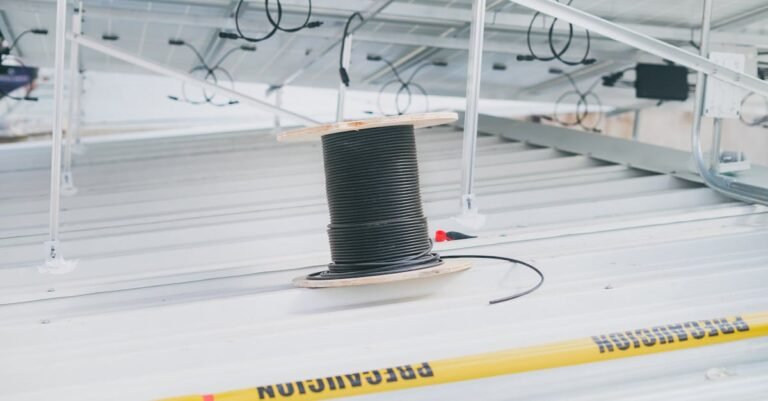Can Crypto Be Green? Exploring the Top Altcoins for Environmental Sustainability
Hey everyone! Let’s talk crypto. It’s exciting, it’s innovative, but let’s be honest, it’s also got a bit of an environmental reputation, right? We’ve all heard the headlines about Bitcoin using massive amounts of energy. It kind of puts a damper on the excitement when you think about the planet. But what if I told you it doesn’t have to be that way? What if there’s a whole world of crypto out there that’s actually trying to be part of the solution, not the problem? The good news is, there is! The crypto space is evolving super fast, and a growing number of projects, especially newer coins called altcoins, are being built with sustainability in mind from the ground up. Today, I want to share some of my thoughts and dive into some of the *top altcoins for environmental sustainability*. These aren’t just vague promises; these are projects using clever technology to be kinder to our planet. So grab a coffee, get comfy, and let’s explore the greener side of crypto together.
Why All the Fuss About Crypto’s Energy Bill? Understanding the Environmental Concerns
Okay, before we jump into the heroes of our story – the *eco friendly crypto* projects – let’s quickly understand the villain, or at least, the misunderstood character: energy consumption in crypto. Why does Bitcoin, the OG cryptocurrency, use so much power? It mostly boils down to something called Proof of Work (PoW).
Imagine Proof of Work like a massive, global guessing game. Computers all over the world, called miners, are constantly guessing a complex number. The first one to guess correctly gets to add the next batch of transactions (a block) to the digital ledger (the blockchain) and earns some new Bitcoin as a reward. Now, this guessing game isn’t easy. It requires incredibly powerful computers running nonstop, crunching numbers like crazy. Why make it so hard? Well, this difficulty is what makes the Bitcoin network secure. It’s incredibly expensive and energy intensive for anyone to cheat the system because they’d need more computing power than almost everyone else combined.
But that security comes at a cost. All those powerful computers running 24/7 consume a staggering amount of electricity. We’re talking energy consumption levels comparable to entire countries, like Argentina or Sweden, depending on the estimate you look at. That’s a huge *carbon footprint crypto* issue! When that electricity comes from fossil fuels (which, let’s face it, a lot of global electricity still does), it contributes significantly to greenhouse gas emissions and climate change. It feels counterintuitive, right? A futuristic digital currency relying on energy practices that feel stuck in the past.
And it’s not just about the electricity during operation. There’s also the problem of electronic waste (e-waste). The computers used for PoW mining, known as ASICs (Application Specific Integrated Circuits), become obsolete fairly quickly as newer, more powerful models come out. Old miners get tossed, contributing to the growing global mountain of e-waste, which often contains toxic materials that are difficult to recycle safely. So, PoW has a double whammy effect: high energy use during operation and physical waste afterwards.
This is where the conversation about *sustainable blockchain* gets really interesting. The crypto community isn’t blind to these problems. Developers and innovators knew there had to be a better way. Enter Proof of Stake (PoS).
Proof of Stake is a different kind of consensus mechanism – a different way for the network to agree on which transactions are valid. Instead of miners solving complex puzzles (like in PoW), PoS relies on validators. These validators are people who own and “stake” (lock up) a certain amount of the cryptocurrency as collateral. Think of it like putting down a security deposit. Instead of a race to guess a number, the network uses a process (often involving randomness and the size of the stake) to select which validator gets to create the next block. If a validator tries to cheat, they risk losing their staked coins. It’s a system secured by economic incentives rather than raw computing power.
The beauty of PoS? It dramatically reduces energy consumption. Since there’s no need for intense computational puzzle solving, validators can run their operations on much less powerful hardware – sometimes even just a regular laptop or a small server. Studies and real world examples (like Ethereum’s recent switch from PoW to PoS, known as “The Merge”) have shown that PoS systems can be over 99% more energy efficient than PoW systems. That’s not a typo! It’s a game changer for *low energy crypto*.
PoS isn’t the only greener alternative, though. Other innovative consensus mechanisms are also emerging, each with its own approach to efficiency and security:
- Proof of Authority (PoA): Relies on a set of trusted authorities (validators known and vetted) to validate transactions. It’s very efficient but less decentralized than PoS or PoW.
- Proof of History (PoH): Used by networks like Solana, this isn’t strictly a consensus mechanism itself but a way to create a verifiable order of transactions before they are processed, which speeds things up and improves efficiency when combined with PoS.
- Proof of Space and Time (PoST): Used by Chia, this relies on validators dedicating hard drive space (“Proof of Space”) over a period (“Proof of Time”) rather than processing power. While initially hailed as green, concerns have been raised about the potential impact on hard drive supply chains and e-waste if drives are rapidly bought and discarded. It’s generally considered much more energy efficient than PoW, though.
- Hashgraph Consensus: Used by Hedera, this isn’t technically a blockchain but a different type of distributed ledger technology (DLT). It uses a “gossip protocol” to achieve consensus very quickly and with extremely low energy usage per transaction.
So, the landscape is shifting. While Bitcoin remains the giant using PoW, a huge portion of the altcoin market, and even the second biggest crypto, Ethereum, have embraced more *energy efficient blockchain* technologies. This shift isn’t just happening because developers think it’s neat; it’s also driven by demand. Investors, institutions, and everyday users are increasingly aware of environmental, social, and governance (ESG) factors. They want sustainable options. They are actively searching for *green cryptocurrency* and *climate conscious crypto* investments. This pressure encourages projects to prioritize sustainability, making the search for the *top altcoins for environmental sustainability* not just a niche interest, but a core part of crypto’s evolution. Understanding this backdrop of PoW’s impact and the rise of efficient alternatives like PoS is key to appreciating the altcoins that are truly making a difference.
Meet the Green Machines: Top Altcoins Championing Sustainability
Alright, now that we understand why greener crypto matters, let’s get to the exciting part: meeting some of the leading projects that are walking the talk. These aren’t just random coins; they are platforms built with efficiency and sustainability woven into their very fabric. Finding the *top altcoins for environmental sustainability* involves looking at their core technology, their energy usage claims, and their commitment to the environment. Let’s dive into a few standouts.
Cardano (ADA): The Research Driven Pioneer
Cardano often comes up first in conversations about *eco friendly crypto*, and for good reason. It was one of the earliest major projects designed from the outset using a Proof of Stake consensus mechanism. Their specific PoS protocol is called Ouroboros, and it’s pretty unique because it was developed through rigorous, peer reviewed academic research. Think university level scientific papers backing up the technology – that’s the Cardano approach.
So, what makes Ouroboros so green? Like other PoS systems, it avoids the intense computation of PoW. Instead of miners racing each other, Ouroboros divides time into “epochs,” and within each epoch, “slots.” For each slot, a “slot leader” is chosen pseudo randomly from the pool of ADA holders who have staked their coins. The more ADA you stake, the higher your chance of being chosen, but it’s still a lottery like system, not a power hungry race. This leader is responsible for validating transactions and creating the next block. The energy required for a validator node is minimal, often comparable to running a simple home server or even less. Cardano’s founder, Charles Hoskinson, has often highlighted this efficiency, estimating the network uses only a tiny fraction (like 0.01% or less) of the energy consumed by Bitcoin.
Beyond the core protocol, Cardano’s philosophy emphasizes long term sustainability and scalability. Their development is methodical, focusing on building a secure and robust foundation that can handle future growth without compromising its efficiency. They aim to create a *sustainable blockchain* platform capable of supporting complex applications, from decentralized finance (DeFi) to identity management and supply chain tracking, all while maintaining its low energy profile.
Are there specific green projects on Cardano? The platform is designed as an infrastructure layer, so its direct environmental impact comes mainly from its low energy use. However, its capabilities lend themselves well to sustainability focused applications. For example:
- Supply Chain Tracking: Imagine tracking coffee beans from a sustainable farm in Ethiopia all the way to your cup, verifying fair trade practices and organic certifications using Cardano’s blockchain. This kind of transparency can empower consumers and reward sustainable producers. Projects are exploring these use cases.
- Digital Identity for Underserved Populations: Providing secure digital identities can help people in developing nations access services, including microfinance for sustainable agriculture or small businesses. Cardano has active projects in Africa focused on education and identity.
- Voting Systems: Secure, transparent, and efficient voting systems built on Cardano could potentially reduce the resources needed for traditional elections, although this is a more indirect environmental benefit.
Cardano’s commitment isn’t just technical; it’s philosophical. They aim to build a more equitable and *sustainable* financial operating system for the world. Their focus on *peer reviewed research* gives confidence in their claims about Ouroboros’s efficiency and security. While all PoS systems are vastly better than PoW, Cardano’s early adoption and research backed approach make it a strong contender for a *top altcoin for environmental sustainability*. It represents a thoughtful, deliberate effort to build a powerful blockchain without the massive energy baggage, making *Cardano (ADA)* a cornerstone of the *Proof of Stake crypto* movement.
Algorand (ALGO): The Carbon Negative Contender
Next up is Algorand, another project that takes its environmental responsibilities very seriously. Algorand uses a variation of Proof of Stake called Pure Proof of Stake (PPoS). This mechanism was designed by Silvio Micali, an MIT professor and Turing Award winner (which is like the Nobel Prize for computing – pretty impressive!).
PPoS is designed to be incredibly fast, scalable, and secure, but crucially for our topic, it’s also extremely energy efficient. How does it work? In simple terms, for each new block, a small group of ALGO token holders is randomly and secretly selected to propose and validate the block. This selection process is quick and computationally inexpensive. Because the selection is random and secret until the last moment, it’s very hard for anyone to target the validators and disrupt the network. And because only a small, randomly chosen committee is needed for each block (rather than every single validator participating all the time), the overall energy footprint is minuscule.
But Algorand doesn’t just stop at being energy efficient. They’ve gone a step further and pledged to be carbon negative. This is a bold claim! How do they achieve it? Algorand partnered with organizations like ClimateTrade, a company that helps businesses offset their carbon emissions. Algorand calculates the (already small) carbon footprint of its blockchain network and then purchases carbon credits to offset more than that amount. These credits often support projects like reforestation or renewable energy initiatives around the world. So, not only does the Algorand network itself use very little energy, but the project actively works to remove more carbon from the atmosphere than it contributes. This makes *Algorand (ALGO)* a standout example of *climate conscious crypto*.
This commitment to sustainability is a key part of Algorand’s appeal, particularly as it targets institutional adoption and real world use cases. Many large organizations are now required or strongly encouraged to consider Environmental, Social, and Governance (ESG) factors in their operations and investments. Algorand’s *carbon negative crypto* status makes it an attractive platform for:
- Sustainable Finance (Green Finance): Building platforms for issuing green bonds, tracking sustainable investments, or facilitating transactions for renewable energy projects.
- Central Bank Digital Currencies (CBDCs): Several countries are exploring Algorand’s technology for potential CBDCs, where energy efficiency and scalability are paramount.
- NFTs and Digital Assets: Providing a greener platform for creating and trading Non Fungible Tokens compared to energy intensive chains.
Projects like Lofty AI use Algorand to fractionalize ownership in real estate, potentially lowering barriers to entry, while others explore its use in verified carbon credit markets. The combination of the highly efficient *Pure Proof of Stake (PPoS)* mechanism and the proactive carbon offsetting policy places Algorand firmly among the *top altcoins for environmental sustainability*. It’s a powerful demonstration that blockchain technology can be both cutting edge and environmentally responsible, aligning well with the growing demand for *ESG crypto* and *sustainable finance crypto* solutions.
Hedera (HBAR): Beyond Blockchain Efficiency
Hedera is a bit different from Cardano and Algorand because it’s not technically a blockchain. It uses a different type of distributed ledger technology called a Hashgraph. While the underlying tech differs, the goal of achieving fast, fair, and secure consensus with low energy use is very much shared, making *Hedera (HBAR)* another important player in the *sustainable blockchain* (or DLT) space.
The Hashgraph consensus mechanism uses a “gossip about gossip” protocol. Imagine nodes on the network quickly sharing transaction information with each other, including information about who they shared it with and when. This creates a complex web of information (the hashgraph) that allows the network to mathematically prove the order and validity of transactions very quickly and efficiently, without needing energy intensive mining or even the block proposal lottery of PoS.
The result? Hedera boasts incredibly low energy consumption per transaction. They often publish figures comparing their energy use to that of major payment networks like Visa, claiming to be significantly more efficient even than those traditional systems, let alone PoW blockchains. According to their own reports, a Hedera transaction consumes just a tiny fraction of a watt hour, whereas a Bitcoin transaction consumes hundreds of kilowatt hours, and even a Visa transaction uses considerably more energy than Hedera’s. This makes it an extremely *low energy crypto* option.
Another unique aspect of Hedera is its governance model. The network is overseen by the Hedera Governing Council, a group of large, well known global organizations from various industries (think Google, IBM, Boeing, major universities, etc.). This council makes decisions about the network’s software, roadmap, and policies. While some crypto purists debate the level of decentralization this implies, having major corporations involved can also drive a focus on stability, reliability, and – importantly for our topic – sustainability and *ESG crypto* considerations, as these are increasingly important for large enterprises.
Hedera’s efficiency and enterprise focus make it suitable for applications where high throughput and low cost are needed, potentially including sustainability focused use cases:
- ESG Reporting and Data Tracking: Companies could use Hedera to securely and transparently log environmental data (like emissions, water usage, or waste recycling rates) creating an immutable record for reporting or audits.
- Renewable Energy Credit (REC) Tracking: The speed and low cost could facilitate efficient markets for tracking and trading RECs or carbon offsets.
- Sustainable Supply Chains: Similar to Cardano, Hedera could be used to track goods and verify sustainable or ethical sourcing practices, benefiting from its high transaction speed. Projects like Avery Dennison’s atma.io use Hedera for tracking items through supply chains.
Hedera’s *Hashgraph* technology offers a compelling alternative path to energy efficient distributed consensus. Its focus on enterprise grade performance and governance, combined with its minuscule energy footprint per transaction, secures its place as a significant *sustainable altcoin*. It shows that innovation in distributed ledger technology extends beyond traditional blockchain structures, offering diverse solutions for a greener digital future.
Other Notable Green Contenders
While Cardano, Algorand, and Hedera are often highlighted, they aren’t the only projects making strides in sustainability. Here are a few others worth mentioning briefly:
- Solana (SOL): Known for its high speed, Solana uses a combination of Proof of Stake and its unique Proof of History (PoH) mechanism. PoH helps order transactions efficiently before they are confirmed by PoS validators, contributing to its low energy use per transaction compared to PoW chains. While it has faced challenges with network stability, its energy efficiency is a significant advantage.
- Polkadot (DOT): Polkadot uses Nominated Proof of Stake (NPoS), where nominators back validators with their stake. This allows for secure validation with significantly less energy than PoW. Polkadot’s focus is on interoperability (“connecting blockchains”), and its energy efficient design is key to enabling a scalable multi chain future.
- Tezos (XTZ): Tezos employs Liquid Proof of Stake (LPoS), where token holders can delegate their validation rights without locking up their tokens. It was one of the earlier PoS chains and continuously evolves through its on chain governance system, always maintaining its energy efficiency.
- Chia (XCH): As mentioned earlier, Chia uses Proof of Space and Time (PoST), relying on hard drive space rather than processing power. This makes it far less energy intensive than PoW. However, debates continue about its potential impact on hard drive manufacturing and e waste compared to PoS systems.
This list isn’t exhaustive! Many other *sustainable altcoins* and *eco friendly crypto* projects are out there, leveraging PoS or other innovative, low energy consensus mechanisms. The key takeaway is that the crypto world is actively developing and deploying technologies that drastically reduce the environmental impact associated with earlier blockchains. Choosing *green cryptocurrency* is becoming easier than ever.
Beyond Just Watts: How Altcoins Power Broader Sustainability Goals
Okay, we’ve talked a lot about energy consumption, Proof of Stake, and specific *low energy crypto* projects. Reducing the direct energy footprint of blockchain networks is hugely important, and it’s fantastic that projects like Cardano, Algorand, and Hedera are leading the charge. But the potential for *sustainable blockchain* technology goes much deeper than just using less electricity. The unique features of blockchain – transparency, immutability (meaning data can’t be easily changed), and decentralization – can be powerful tools to address a wide range of environmental and social sustainability challenges. Let’s explore how altcoins and the underlying technology are contributing to a greener, fairer world in other ways.
Revolutionizing Supply Chain Transparency
Think about the journey of the products you buy. Where did the coffee beans for your morning brew come from? Was the cotton in your t shirt grown using sustainable farming practices? Was the cobalt in your smartphone battery mined ethically? Often, it’s incredibly difficult to know. Supply chains are complex, involving many different companies and countries, making it easy for information to get lost or even deliberately hidden.
Blockchain technology can change this. By recording key data points at each step of a product’s journey onto an immutable ledger, we can create unprecedented transparency. Imagine:
- Tracking Food Provenance: A farmer logs the harvest date and organic certification of their produce onto the blockchain. The distributor logs the transport conditions. The supermarket logs the arrival date. As a consumer, you could potentially scan a QR code on the packaging and see this entire verified history, helping you choose genuinely sustainable options and reducing food fraud. This also helps reduce waste by pinpointing inefficiencies in the chain.
- Verifying Ethical Sourcing: Tracking minerals like diamonds or cobalt from mine to manufacturer, recording certifications and chain of custody data on the blockchain. This can help combat conflict minerals and ensure fair labor practices. Companies using *blockchain for good* can prove their ethical claims.
- Monitoring Deforestation Free Products: Tracking commodities like palm oil or soy to ensure they weren’t grown on illegally cleared forest land. Satellite imagery data could even be integrated and logged onto the chain.
Various altcoin platforms with smart contract capabilities (like Cardano, Algorand, Hedera, but also others built on Ethereum’s greener PoS chain) can host these kinds of supply chain solutions. It’s about using the blockchain’s trustworthiness to verify claims and empower conscious consumerism.
Energizing Renewable Energy Markets
The transition to renewable energy sources like solar and wind is critical for combating climate change. Blockchain technology can play a significant role in accelerating this transition:
- Peer to Peer (P2P) Energy Trading: Imagine homes with solar panels selling their excess electricity directly to their neighbors via a blockchain platform. Smart contracts could automate the measurement, billing, and payment, creating more efficient and localized energy grids. This encourages more rooftop solar adoption.
- Transparent Tracking of Renewable Energy Credits (RECs): RECs are certificates representing proof that 1 megawatt hour (MWh) of electricity was generated from a renewable source. Companies buy RECs to offset their emissions or meet renewable energy targets. Blockchain can create a transparent, auditable system for issuing, tracking, and retiring RECs, preventing double counting and increasing trust in the market. Projects focusing on *renewable energy crypto projects* are emerging in this space.
- Crowdfunding Renewable Energy Projects: Blockchain platforms could enable fractional ownership or tokenized investment in new solar or wind farms, allowing smaller investors to participate and potentially unlocking more capital for green energy development. This ties into *sustainable finance crypto*.
Making Carbon Markets More Efficient and Trustworthy
Carbon credits are similar to RECs but represent the reduction or removal of one metric ton of carbon dioxide equivalent from the atmosphere. Companies buy these credits to offset emissions they can’t eliminate. However, the traditional carbon market faces challenges with transparency, verification, and liquidity.
Blockchain can help by:
- Tokenizing Carbon Credits: Representing carbon credits as unique digital tokens on a blockchain. This makes them easier to trade, track, and retire transparently. Anyone can verify the origin and status of a credit on the public ledger.
- Improving Monitoring, Reporting, and Verification (MRV): Integrating data from sensors, drones, or satellites directly onto the blockchain to provide verifiable proof of carbon reduction or sequestration activities (like reforestation projects).
- Creating Decentralized Marketplaces: Building platforms where buyers and sellers of carbon credits can transact directly, potentially reducing friction and increasing access, especially for smaller projects in developing countries. Several projects are exploring *carbon credits* on chains like Algorand or using dedicated climate focused platforms.
Driving Sustainable Finance (DeFi for Good)
Decentralized Finance (DeFi) aims to rebuild traditional financial services on the blockchain. While much of DeFi is focused on speculation, there’s a growing movement towards “DeFi for Good” or *impact investing crypto*:
- Microfinance for Sustainable Initiatives: Blockchain platforms can lower the cost of facilitating small loans (microfinance) to farmers adopting sustainable practices or entrepreneurs starting green businesses in underserved communities.
- Impact Investing Platforms: Creating platforms where investors can specifically fund projects with measurable environmental or social benefits, with returns potentially tied to achieving those impact goals, all tracked transparently on chain.
- Green Bonds on Chain: Streamlining the process of issuing and managing green bonds (debt instruments specifically funding environmental projects) using blockchain technology for efficiency and transparency. *Sustainable finance crypto* is a rapidly growing area.
Enhancing Environmental Monitoring
Reliable data is crucial for understanding and addressing environmental problems. Blockchain can secure this data:
- Decentralized Sensor Networks: Imagine networks of low cost sensors monitoring air quality, water pollution, or illegal logging activity. Data from these sensors could be automatically timestamped and recorded onto a blockchain, creating a tamper proof record accessible to researchers, regulators, and the public.
- Citizen Science Platforms: Enabling individuals to contribute environmental observations (e.g., wildlife sightings, pollution incidents) to a secure, verifiable database powered by blockchain.
These examples show that the positive environmental potential of altcoins and blockchain extends far beyond just their own energy use. By leveraging transparency, security, and efficiency, *sustainable blockchain* applications can actively contribute to solving some of the world’s biggest sustainability challenges. When we look for *top altcoins for environmental sustainability*, we should consider not only their direct energy footprint but also their potential to power these kinds of *blockchain for good* applications. It’s about building a more sustainable digital infrastructure for a more sustainable world.
Investing in a Greener Crypto Future: Your Next Steps
So, we’ve journeyed through the world of *eco friendly crypto*, uncovering the reasons why sustainability matters in this space and highlighting some of the *top altcoins for environmental sustainability*. We saw how the energy guzzling Proof of Work model is being replaced by vastly more efficient alternatives like Proof of Stake, used by innovative projects like Cardano, Algorand, and Hedera. We also explored how the core features of blockchain technology itself can power solutions for everything from transparent supply chains to revitalized carbon markets and *sustainable finance crypto*.
The key takeaway? Crypto doesn’t have to be bad for the planet. In fact, it holds incredible potential to be a force for environmental good. The narrative is shifting, and a *greener crypto future* is not just possible – it’s actively being built by numerous dedicated teams and communities.
As investors, users, or even just curious observers, we have a role to play. By understanding the difference between energy intensive coins and *sustainable altcoins*, we can make more informed choices. Supporting projects that prioritize low energy consumption and actively work on *blockchain for good* applications sends a powerful message to the entire industry.
What can you do now?
- Do Your Own Research (DYOR): This article highlighted a few key players, but the world of *green cryptocurrency* is vast and evolving. Dig deeper into the projects mentioned, explore others, and understand their specific technologies and sustainability commitments. Look beyond marketing claims and check their energy usage reports or partnerships.
- Consider the Environmental Impact: When thinking about investing in or using cryptocurrencies, factor in their environmental footprint alongside other considerations like technology, team, and tokenomics. Ask yourself: Does this project align with my values regarding sustainability?
- Support Sustainable Innovation: Engage with communities building *climate conscious crypto* solutions. Participate in governance if possible. Use applications built on greener platforms. Your engagement helps these ecosystems thrive.
- Spread the Word: Talk to friends, family, or colleagues about the existence of *eco friendly crypto*. Many people still only associate crypto with Bitcoin’s energy use. Help change the narrative by sharing information about sustainable alternatives.
The journey towards a truly sustainable digital economy is ongoing, but the rise of energy efficient altcoins and innovative blockchain applications marks a significant leap forward. By choosing wisely and supporting projects committed to our planet, we can all contribute to building a crypto space that is not only revolutionary but also responsible. Let’s invest in and champion a future where technology and sustainability go hand in hand.









